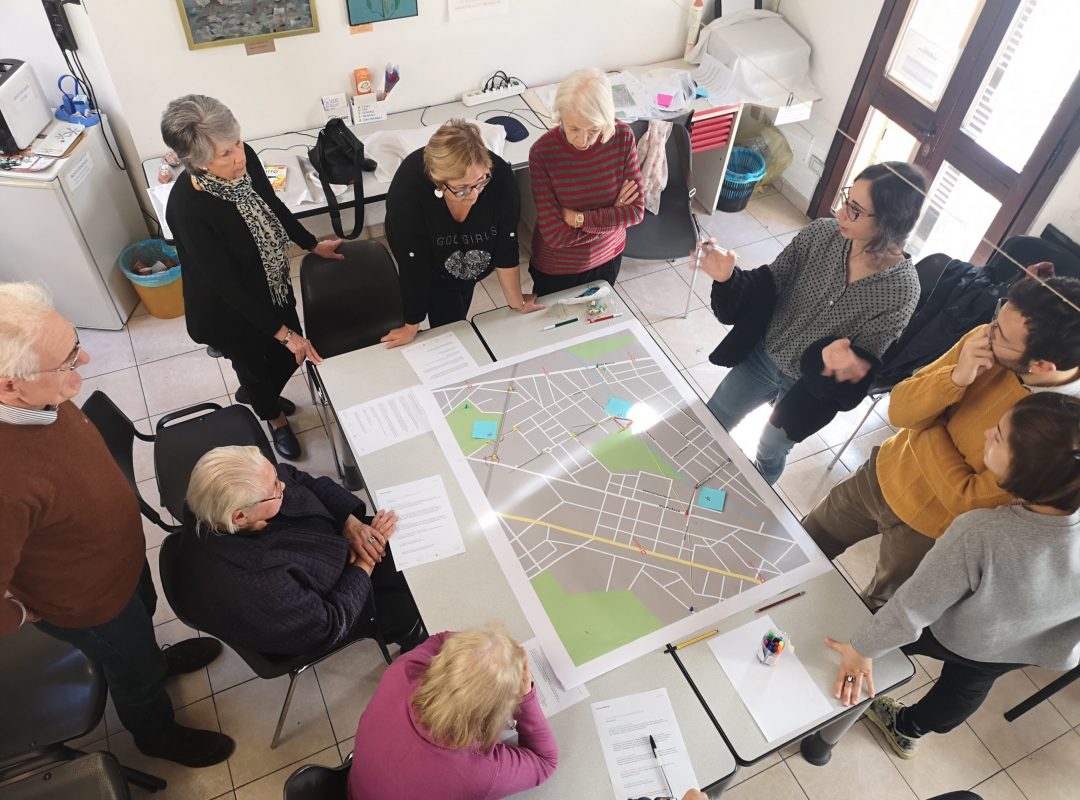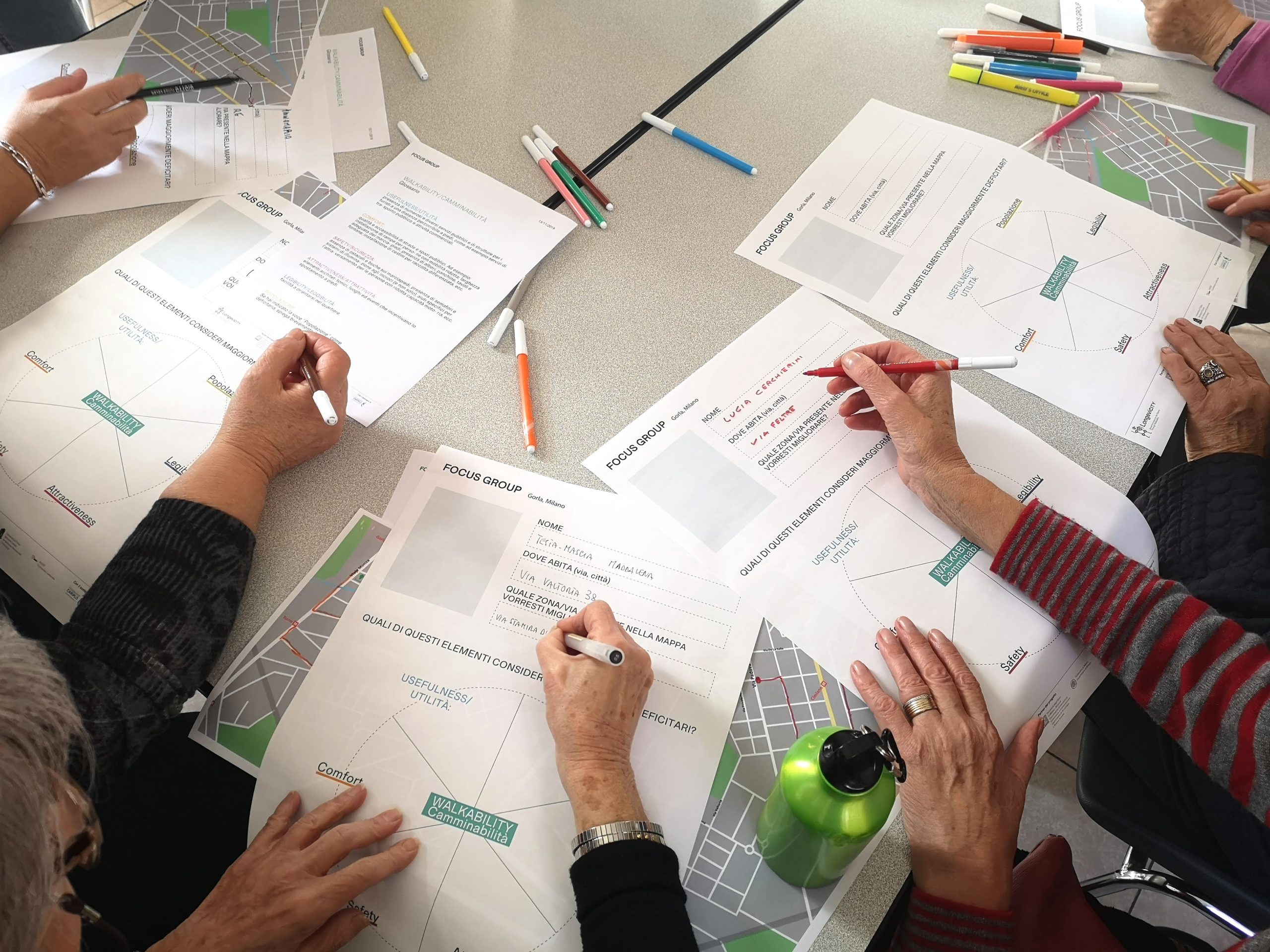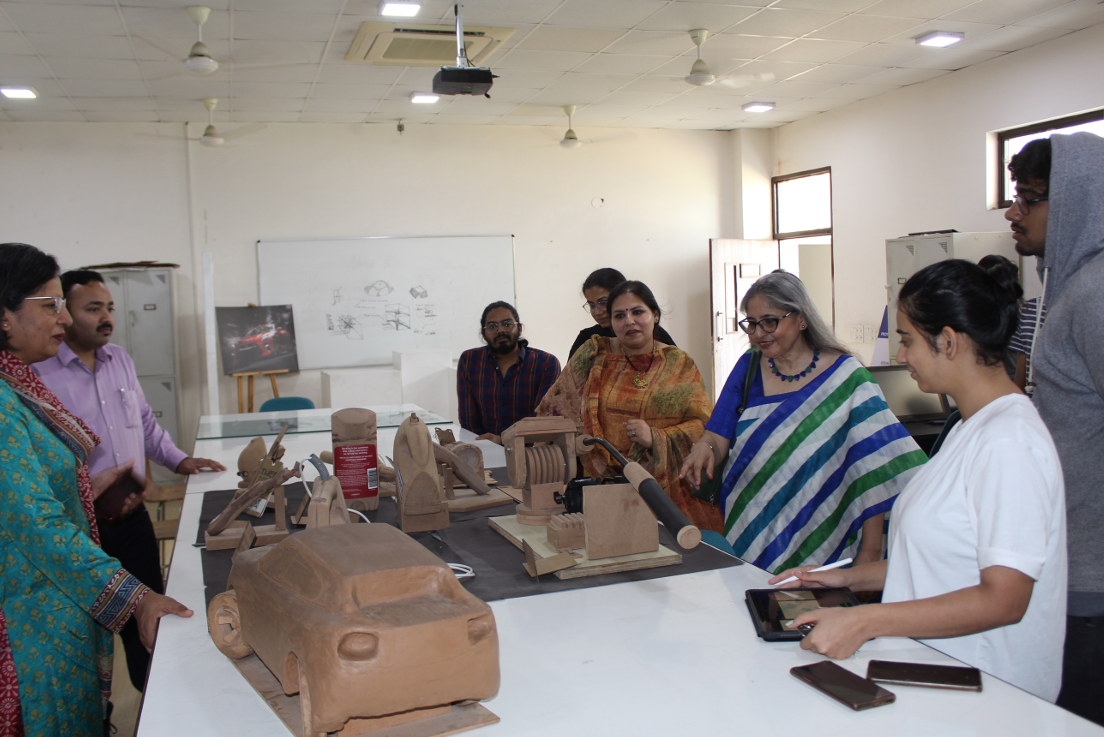LONGEVICITY project looks at the cities of the future as highly populated by long-living active people and innovative technological facilities. LONGEVICITY Project is based on a multidisciplinary approach (grouping knowledge, methods and tools from social sciences, architectural design, and Information and Communication Technologies) to study how supporting social inclusion of elderlies living in urban environments by enhancing their active walking. The research has the objective to study walkability and pedestrian mobility in the city of Milan, considering the specific needs of senior citizens. It is aimed at better understanding what elderly people perceive as criticalities or value elements while walking/crossing in the city and at improving selected situations by means of practical interventions on the comfort and safety of urban environments.
• Design for Sustainability Transition
• Strategic Design
• Service Design


Before proceeding with the creation of the three Design and Innovation Centers, it is essential to understand how to update and improve education in the field of design. This would facilitate the creation of a structure to develop future educational methods. Therefore, we helped our partners by mapping European best practices in the educational field of design. Courses, laboratories and side activities have been analysed. What has been learned will then be updated with the culture of the Indian projects to create a modern and ad-hoc education for the young designers of the place, going to implement existing courses within the 3 Indian universities and setting up three new Design & Innovation centres.



